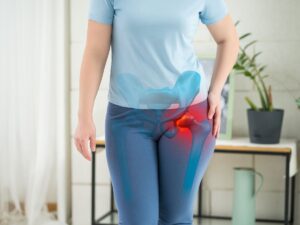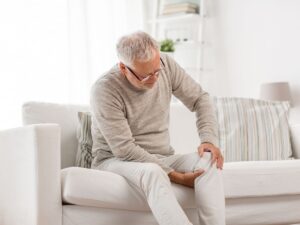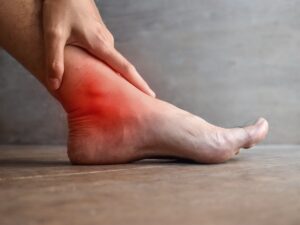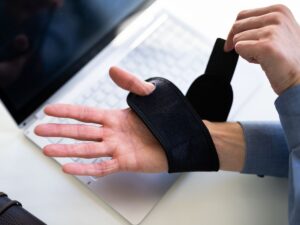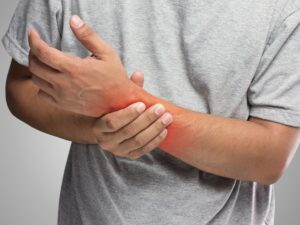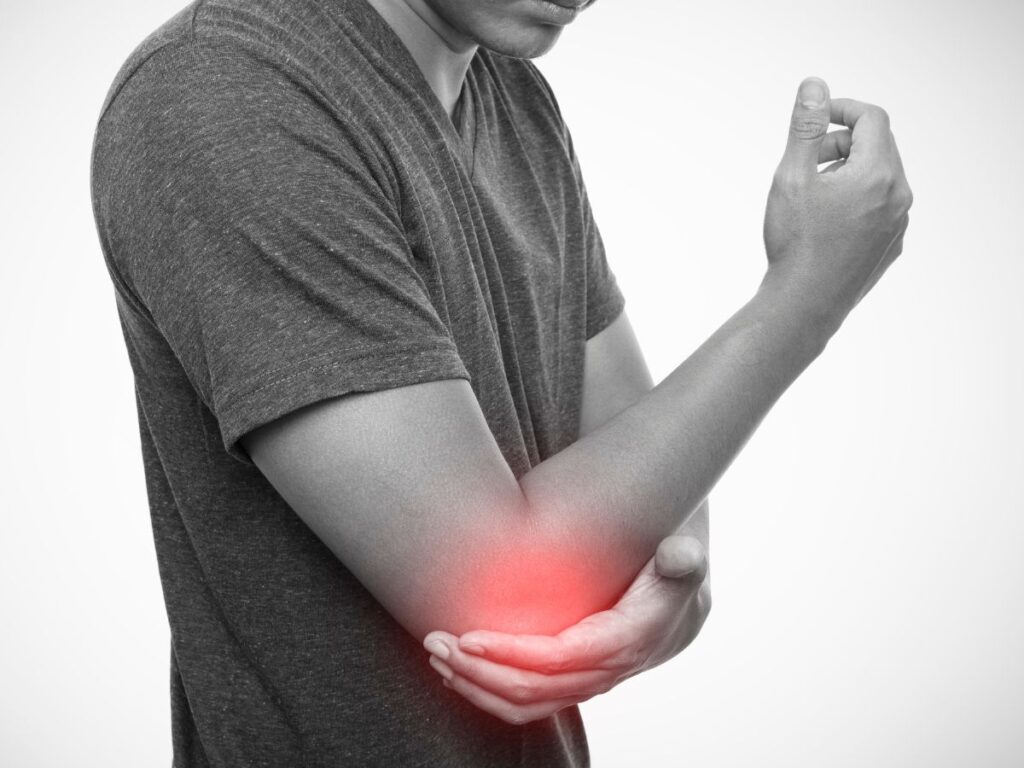Understanding Arthritis in the Hip
Arthritis in the hip joint affects millions of adults worldwide, causing varying degrees of discomfort, stiffness, and reduced mobility. This chronic condition typically arises when cartilage—the protective cushioning within the joint—wears down, leading to inflammation and pain. Osteoarthritis, the most common type, develops over time as a result of aging, repetitive stress, or an old injury that never fully healed. Inflammation-driven forms like rheumatoid arthritis may also target the hip, although less frequently. Regardless of the underlying cause, persistent hip pain can interfere with everything from climbing stairs to sleeping comfortably. The good news is that with the right blend of therapies, exercises, and lifestyle adjustments, many individuals experience significant relief. If you’re looking to regain mobility and reduce discomfort, exploring a comprehensive plan for hip pain relief is key.
Common Symptoms and Impact
Hip arthritis often starts subtly, presenting only slight twinges of pain or stiffness when getting out of bed or standing after long periods of sitting. As cartilage degradation worsens, you may notice:
- Pain and Stiffness: Deep, aching discomfort in the groin, buttock, or thigh areas, especially after activity.
- Reduced Range of Motion: Difficulty bending or rotating the hip joint, making everyday tasks like tying shoes a challenge.
- Swelling or Warmth: Inflammatory forms of arthritis can lead to localized swelling and tenderness around the joint.
- Clicking or Grinding Sensations: Bone-on-bone contact may produce audible clicks or grinding feelings when walking.
- Postural Changes: Chronic pain sometimes prompts compensatory movements or limping, potentially affecting the spine, knees, or ankles.
Unchecked, these issues can progress, limiting independence and daily activities. Over time, you may find that social outings, exercise routines, and even travel plans become more daunting. That said, a targeted treatment strategy can help mitigate these effects and enhance overall quality of life.
The Role of Early Intervention
Many people wait until hip pain becomes unbearable before seeking treatment. However, early intervention usually yields the best outcomes. Catching arthritic changes in the hip while they are mild or moderate allows you to integrate pain relief tactics, correct posture problems, and strengthen surrounding muscles before significant joint damage sets in. By proactively addressing the condition, you could delay—or in some cases, avoid—more invasive procedures such as hip replacement surgery. Additionally, effective early treatment often involves educating patients on movement patterns, stress management, and nutritional strategies that complement standard medical interventions. This multifaceted approach helps stabilize the joint environment, reducing inflammation and slowing down cartilage wear.
Noninvasive Treatment Approaches
For mild to moderate hip arthritis, healthcare providers often recommend noninvasive or minimally invasive strategies. These may include:
- Over-the-Counter Medications: Pain relievers such as acetaminophen or NSAIDs can minimize discomfort and control inflammation. However, long-term reliance should be monitored to avoid adverse effects.
- Weight Management: Each extra pound adds pressure to the hip joint. Losing even a small percentage of body weight can reduce daily stress on arthritic hips.
- Physical Therapy: Structured exercises and targeted stretches can bolster muscles around the hip, improving range of motion and stabilizing the joint.
- Assistive Devices: Canes, walkers, or ergonomic footwear can help shift or distribute weight during movement, easing pain.
- Heat and Cold Therapy: Warm compresses relax tight tissues, while cold packs help limit swelling and numb localized pain flare-ups.
Implementing these options provides a foundation for pain relief that, when combined with more specialized treatments, can noticeably improve daily function. Because arthritis is progressive, early-stage interventions aim to maximize joint efficiency and slow further deterioration.
Physical Therapy and Exercise
Physical therapy is a cornerstone for managing arthritic hip pain. Therapists focus on exercises to strengthen the glutes, hip flexors, and core—muscles that stabilize the hip. These might include:
- Bridges: Lying on your back with bent knees, lift your pelvis off the floor, engaging your gluteal muscles.
- Standing Hip Abductions: Holding onto a chair, lift one leg sideways to strengthen the outer hip muscles.
- Hip Flexor Stretches: Kneeling on one knee, gently lean forward to open the front of the hip and relieve tension.
- Seated Marching: Sitting upright, lift your knees in a marching motion to help maintain hip mobility.
- Clamshells: Lying on your side with knees slightly bent, rotate your top knee upward while keeping your feet together. This targets deep hip stabilizers.
Conducting these exercises under the watchful eye of a trained therapist ensures correct technique and progression. Coupled with manual therapy—such as joint mobilization or soft tissue release—patients often see improvements in walking, stair climbing, and even sleeping positions. If you need more structured guidance, check out our Hip Pain Relief for Arthritis resource, where you can discover integrated therapy approaches that help restore mobility.
How Dr. Elham Can Help
Dr. Elham specializes in noninvasive musculoskeletal treatments that assist those with arthritic hip pain. By assessing gait mechanics, posture, and muscle imbalances, she devises customized plans geared toward each patient’s functional goals. Techniques may include gentle manipulations, rehabilitative exercises, and lifestyle advice. For those with more advanced arthritis, Dr. Elham collaborates with other medical professionals—ensuring continuity of care, whether you require imaging studies, injections, or specialized orthopedic consultations. Her emphasis on patient education helps you better understand how daily habits, stress levels, and nutritional factors play roles in chronic inflammation. With Dr. Elham’s guidance, many individuals find a renewed sense of control over their discomfort, shedding the notion that hip pain must be a lifelong burden.
Medications and Injections
For moderate to severe arthritic hip pain, prescription-strength medications or corticosteroid injections might become necessary. Corticosteroids help quell inflammation directly in the joint, often bringing several weeks or months of relief. However, they’re generally not a permanent solution, as repeated injections may weaken tendons and ligaments. Doctors sometimes recommend viscosupplementation—injecting lubricating fluids into the joint space—to improve mobility and diminish friction. Patients with inflammatory forms of arthritis may also benefit from disease-modifying antirheumatic drugs (DMARDs), which target the immune system factors fueling joint damage. While these strategies can significantly reduce pain, they often work best when integrated with lifestyle modifications, exercise programs, and supportive therapies like chiropractic or physical therapy. This well-rounded approach ensures short-term symptom control without neglecting the broader goal of long-term hip health.
Weight Management and Nutrition
Excess weight intensifies stress on the hip joint, accelerating cartilage breakdown. Losing weight may reduce pain levels, while also easing mechanical strain. Equally important is focusing on an anti-inflammatory diet rich in whole foods like fruits, vegetables, lean proteins, and healthy fats (e.g., omega-3 fatty acids found in salmon or walnuts). Such nutrients can help modulate the body’s inflammatory responses, supporting better joint function. Some research also suggests that certain spices like turmeric contain curcumin, which may help reduce arthritic inflammation. However, any supplement regimen should be discussed with a healthcare provider, as interactions with existing medications are possible. By pairing mindful eating with moderate exercise—tailored for arthritic hips—patients frequently report enhanced energy, weight loss, and improved mobility.
Heat, Cold, and Home Care Routines
At-home remedies play a pivotal role in day-to-day pain management. Applying heat packs before activity helps relax tight muscles surrounding the hip, making it easier to start daily chores or exercise. Conversely, cold packs excel at reducing inflammation and dulling acute pain episodes. Alternating between heat and cold can offer a balanced approach: use heat for 10–15 minutes to improve flexibility, followed by a brief cold application for swelling control. Additionally, supportive aids—like adjustable seating, cushioned foot mats, or even specialized hip braces—can relieve tension during routine tasks. Practicing gentle movements, such as a short daily walk or performing easy range-of-motion drills, prevents excessive stiffness, enhancing overall comfort levels.
Mind-Body Approaches
Chronic hip pain can also take an emotional toll, contributing to stress, anxiety, or even mild depression. Techniques like yoga, tai chi, or Pilates can cultivate a mind-body connection that improves balance and joint stability. These low-impact disciplines emphasize controlled movement, breath work, and mindfulness—all of which can alleviate pain in weight-bearing joints. Meditation and deep breathing exercises may also regulate stress hormones, indirectly curbing inflammation. Should mental strain become overwhelming, consulting a counselor or psychologist can provide valuable coping strategies. Addressing emotional factors often strengthens the effectiveness of physical interventions, leading to more comprehensive hip pain relief.
Ergonomics and Posture
Everyday habits significantly influence hip arthritis pain. Slouching in chairs, carrying heavy items improperly, or wearing unsupportive shoes can gradually worsen symptoms. Correct posture distributes weight evenly across the pelvic region, decreasing undue stress on arthritic hips. When standing, keep your shoulders back, chest open, and pelvis in a neutral position—imagine a line extending from your ears through your shoulders, hips, and ankles. Sitting with proper lumbar support can also reduce hip strain; choose chairs with adjustable seat heights and backrests if possible. Individuals who spend long hours on their feet may benefit from orthotic inserts or shoes designed to absorb impact, thus minimizing joint compression. These fine-tuned adjustments often complement the exercise-based improvements gained from physical therapy.
Exploring Surgical Options
While many cases of arthritic hip pain respond well to conservative measures, advanced degeneration sometimes leads doctors to recommend surgical intervention. Hip resurfacing or total hip replacement are the main procedures for end-stage arthritis, where cartilage loss is extensive. Modern hip replacement techniques often yield excellent outcomes, with many patients regaining near-normal joint function. However, surgery involves significant recovery time, along with potential risks like infection or implant failure. If you approach this route, thorough discussions with an orthopedic surgeon help clarify whether the benefits outweigh the risks in your specific situation. Even post-surgery, rehabilitation remains crucial—physical therapy, targeted exercises, and routine checkups guide you back to full activity.
Preventing Flare-Ups and Relapses
For ongoing success in managing arthritic hip pain, consistency is essential. Sticking to your exercise routine—even when discomfort subsides—helps maintain the muscular support necessary to protect the joint. Regular activity such as swimming or stationary cycling delivers a low-impact cardio workout without placing too much stress on the hip. Because arthritis fluctuates, minor flare-ups may still occur. During these times, adjusting your exercises, using topical pain relievers, or momentarily increasing rest can keep symptoms under control. Reviewing progress every few months with a healthcare provider or physical therapist allows for timely tweaks to your regimen. By staying vigilant and proactive, you reduce the risk of returning to the initial, more severe pain levels.
Lifestyle and Support Networks
Adopting a healthier lifestyle often proves crucial in mitigating hip arthritis. Beyond exercise and nutrition, attending support groups or connecting with friends and family encourages emotional well-being. An empathetic social circle can help you navigate the frustration that sometimes accompanies chronic pain. Simple daily strategies—like meal prepping anti-inflammatory dishes, creating a realistic to-do list, or scheduling gentle walks with a friend—foster both accountability and motivation. If stress frequently exacerbates your pain, consider short relaxation techniques such as journaling, progressive muscle relaxation, or breathing exercises. When integrated, these practices form a supportive framework for long-term hip comfort, personal empowerment, and a more positive outlook.
When to Seek Professional Guidance
Not all hip aches equate to arthritis, but persistent pain or stiffness—especially if it worsens over time—warrants professional evaluation. If pain disrupts your sleep, daily tasks, or mobility, consult a primary care physician for initial imaging and blood tests. Upon confirming arthritis, your doctor may refer you to a rheumatologist or orthopedic specialist for further analysis. Meanwhile, involving professionals like Dr. Elham ensures you receive a broad, integrative approach. Timely intervention frequently leads to better outcomes: conservative treatments become more effective when started before the joint undergoes severe structural changes. Should you be considering surgery, a second opinion might clarify whether less invasive strategies remain viable. Ultimately, knowledge empowers you to make informed decisions about your path to relief.
Moving Toward a Pain-Free Future
Although arthritis in the hip can be life-altering, a well-rounded plan significantly improves the odds of regaining comfort and mobility. Approaches like physical therapy, exercise, proper nutrition, and stress management tackle both the symptoms and deeper causes of inflammation. In cases where conservative methods don’t suffice, medical interventions such as prescription medications or surgery can offer a further degree of respite. Throughout this journey, experts such as Dr. Elham remain committed to personalized care, prioritizing long-term joint health over temporary fixes. If you’d like to explore specialized options in greater depth, our Hip Pain Relief for Arthritis page provides insights into integrative strategies. By embracing early intervention, consistent effort, and expert guidance, you can reclaim much of the freedom arthritis once threatened to take away.


